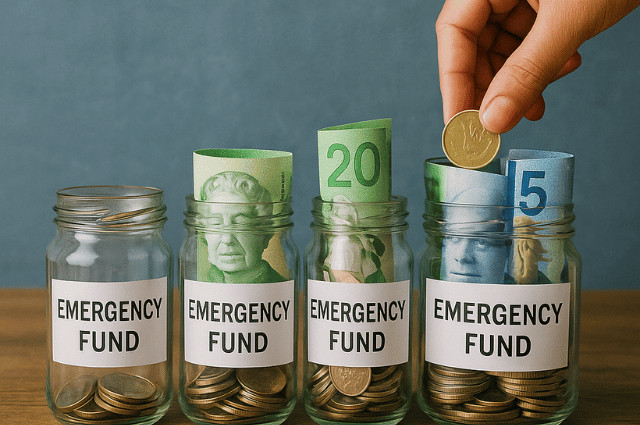Life is full of surprises — and not all of them are pleasant.
Whether it is a job loss, medical expense, or urgent car repair, having an emergency fund can help you stay afloat without going into debt.
But for many Canadians, especially those living paycheque to paycheque, the idea of saving even a few hundred dollars can feel out of reach.
This post is for anyone in Canada who wants to start building an emergency fund, even with a modest income.
You do not need to save thousands overnight. With a few simple steps and the right approach, you can build a financial cushion for life’s surprises.
Feeling unsure about where to begin? Our team is here to support you. Schedule a free consultation today.
What an Emergency Fund Really Means — and Why It Matters
An emergency fund is a savings buffer for unexpected expenses that arise suddenly. It is not for vacations or big purchases — it is for things like:
- Medical emergencies
- Job loss or income drop
- Car or home repairs
- Emergency travel for family reasons
When there is no emergency savings, people tend to depend on credit cards or payday loans, which can turn into an endless debt cycle. Having even $500 to $1,000 saved can provide peace of mind and reduce financial stress.
How Much Should You Aim For?
There is no perfect amount, but here are some helpful benchmarks:
- Starter goal: $500 to $1,000
- Minimum fund: One month of essential expenses
- Ideal fund: 3–6 months of essential expenses
Start small. Reaching the first $500 is a major milestone. Once you get there, you can build up from there without pressure.
5 Simple Ways to Start Saving (Even on a Low Income)
1. Set a Tiny Goal First
Start with a target like $5 or $10 a week. You can always adjust later. The key is to get started.
2. Use a Separate Account
Open a free savings account at your bank or credit union and name it “Emergency Fund.” Keeping it separate helps avoid accidental spending.
3. Round Up Your Purchases
Some banks let you round up debit purchases and save the difference. For example, if you spend $4.50, it rounds up to $5 and moves $0.50 to your savings.
4. Automate Your Savings
Set up automatic transfers for the same day you get paid. Saving just $10 or $20 from each paycheque can grow into a solid emergency fund over time.
5. Save Found Money
Tax refunds, rebates, or birthday money — instead of spending it, save a portion. If you receive the Canada Carbon Rebate or GST credit, put part of it away.
Where Should You Keep Your Emergency Fund?
Look for a high-interest savings account at your bank or an online option like EQ Bank or Tangerine. The money should be:
-
- Easy to access (but not too easy)
- Separate from your main chequing account
- Safe and insured by CDIC
Avoid keeping it in cash at home or tying it up in investments you cannot access quickly.
What to Avoid When Building an Emergency Fund
When you are starting an emergency fund, it is just as important to know what not to do. Avoiding common mistakes can save you stress later:
- Do not invest in the stock market. Your emergency fund should always be safe and easy to access. Stocks and other investments can drop in value at the wrong time, leaving you without the money when you need it most.
- Do not dismiss small contributions. Even a few dollars a week makes a difference. Over time, small, steady deposits build up faster than you might expect.
- Do not wait for the “right” time. Life will always bring bills, surprises, and reasons to delay. The best time to start saving is now, no matter how little.
Building an emergency fund is about consistency, not size. The habit of saving regularly is what creates financial security. Once the habit is in place, the amount will grow naturally.
Need help with budgeting or setting up a simple savings plan?
Book a free consultation with our team — we are here to guide you every step of the way.

